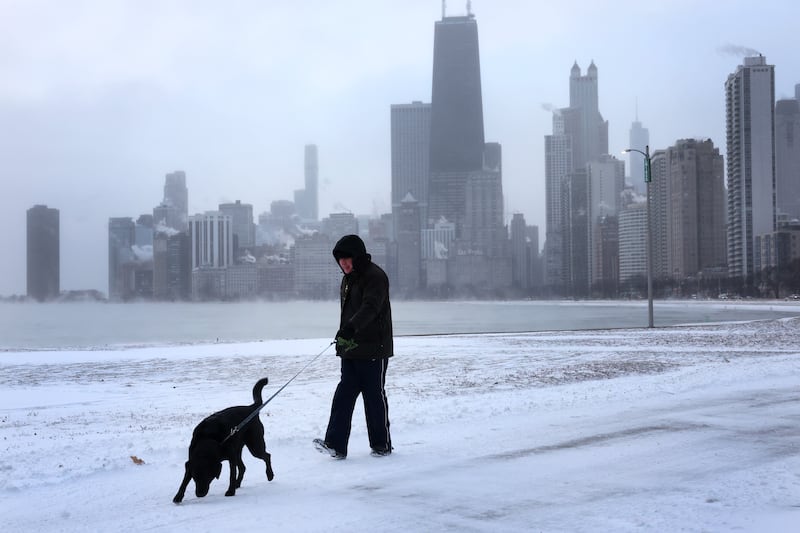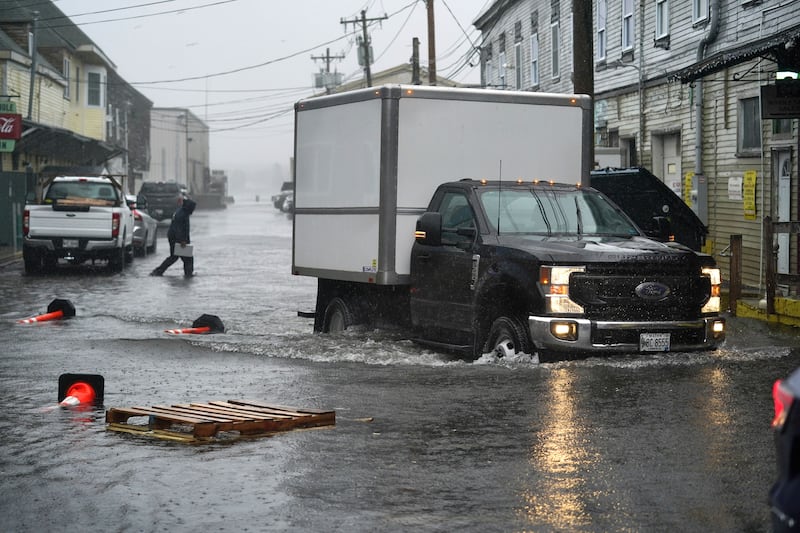Tens of millions of Americans have endured bone-chilling temperatures, blizzard conditions, power outages and cancelled holidays after a winter storm that forecasters said was nearly unprecedented in its scope.
The conditions exposed 60 per cent of the US population – more than 200 million people – to some sort of winter weather advisory or warning.
The US National Weather Service’s map “depicts one of the greatest extents of winter weather warnings and advisories ever”, forecasters said.
More than 4,600 flights within, into or out of the US were cancelled on Friday, according to the tracking site FlightAware, causing more mayhem as travellers tried to make it home for the holidays.
Why has much of Ireland had no sun for 10 days now? The jet stream is to blame
After Storm Éowyn, Ireland must do what Sweden did 20 years ago
‘Everyone is locked in their house’: Western Australia braces for flash flooding as Cyclone Zelia makes landfall
Power finally restored to all homes and businesses following Storm Éowyn
At least 1.4 million homes and businesses were without electricity on Friday morning.
The huge storm stretched from border to border.
In Canada, WestJet cancelled all flights on Friday at Toronto Pearson International Airport, beginning at 9am. In Mexico, migrants waited near the US border in unusually cold temperatures as they awaited a US supreme court decision on whether and when to lift pandemic-era restrictions that prevent many from seeking asylum.
“This is not like a snow day when you were a kid,” US president Joe Biden warned in the Oval Office after a briefing from federal officials. “This is serious stuff.”
Forecasters said a bomb cyclone – when atmospheric pressure drops very quickly in a strong storm – had developed near the Great Lakes, stirring up blizzard conditions, including heavy winds and snow.
Even though fleets of snow ploughs and gritters have been deployed, driving was hazardous and sometimes deadly.
The Kansas Highway Patrol said three people were killed in separate vehicle collisions in northern Kansas this week.
The collisions occurred on Wednesday evening as bitter cold and snow was moving through the region. The drivers involved in the collisions lost control of their vehicles on icy roads.
In Kansas City, Missouri, a driver died on Thursday after skidding into a creek. Meanwhile, state police in Michigan reported multiple crashes on Friday, including a pile-up involving nine lorries.
Activists were rushing to get the homeless out of the cold. Nearly 170 adults and children were keeping warm early on Friday in Detroit at a shelter and a warming centre designed to hold 100 people.
“This is a lot of extra people” but “you can’t” turn anyone away, said Faith Fowler, the executive director of Cass Community Social Services, which runs both facilities.

In Chicago, Andy Robledo planned to spend the day organising efforts to check on unhoused people through his non-profit Feeding People Through Plants. Mr Robledo and volunteers build tents modelled on ice-fishing tents, including a plywood subfloor.
“It’s not a house, it’s not an apartment, it’s not a hotel room. But it’s a huge step up from what they had before,” Mr Robledo said.
In Portland, Oregon, officials opened five emergency shelters. Fallen trees and power lines have closed roads across the Portland metro area and nearly 50 miles of Interstate 84, a major highway through the Columbia River Gorge, were closed on Friday morning.
All bus service was suspended in the greater Seattle area on Friday morning and DoorDash suspended delivery service because of hazardous conditions in parts of several states, including Minnesota and Iowa.
In far northern Indiana, lake-effect snow rolling off Lake Michigan could boost storm totals to well over a foot in some areas by Sunday, said Mark Steinwedel, a meteorologist with the National Weather Service in Syracuse, Indiana.
“It’s really going to add up,” he said, predicting “pretty awful travel”.
The weather service is forecasting the coldest Christmas in more than two decades in Philadelphia, where school officials shifted classes online on Friday.
In South Dakota, governor Kristi Noem activated the state’s National Guard to haul firewood from the Black Hills Forest Service to the Rosebud Sioux Tribe as some members were stranded in their homes with dwindling fuel.
Other tribes were also struggling, including the Oglala Sioux Tribe in the western part of the state, which was using snowmobiles to reach members who live at the end of miles-long dirt roads.
But with the vehicles breaking down in the 3m drifts, officials were considering using horses to deliver essentials to some homes as they sought help from federal officials.
“It’s been one heck of a fight so far,” said tribal president Frank Star Comes Out.

In Maine, gusts approaching 112km/h were reported along the coast on Friday morning. One New Hampshire’s Mount Washington, the tallest peak in the northeast, the wind topped 240km/h. The governor closed state offices, ferry service to Casco Bay islands was suspended and flooding was leading to some water rescues.
In Boston, rain combined with a high tide, sent waves over the sea wall at Long Wharf in Boston and flooded some downtown streets.
With temperatures dipping to -13.9 degrees in northern Mississippi, Kyle Young abandoned the shorts that he normally wears to his job at a Starkville store that sells Mississippi State University clothing and decor.
“It’s freezing here,” said Mr Young, who dressed in layers as he did a brisk business with last minute Christmas shoppers. “I can usually tough it out.”
It was so bad in Vermont that Amtrak cancelled service for the day, and non-essential state offices were closing early.
“I’m hearing from crews who are seeing grown trees ripped out by the roots,” Mari McClure, president of Green Mountain Power, the state’s largest utility, said at a news conference.
Calling it a “kitchen sink storm”, New York governor Kathy Hochul declared a state of emergency as wintry weather headed into the state. – AP











